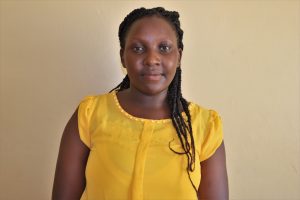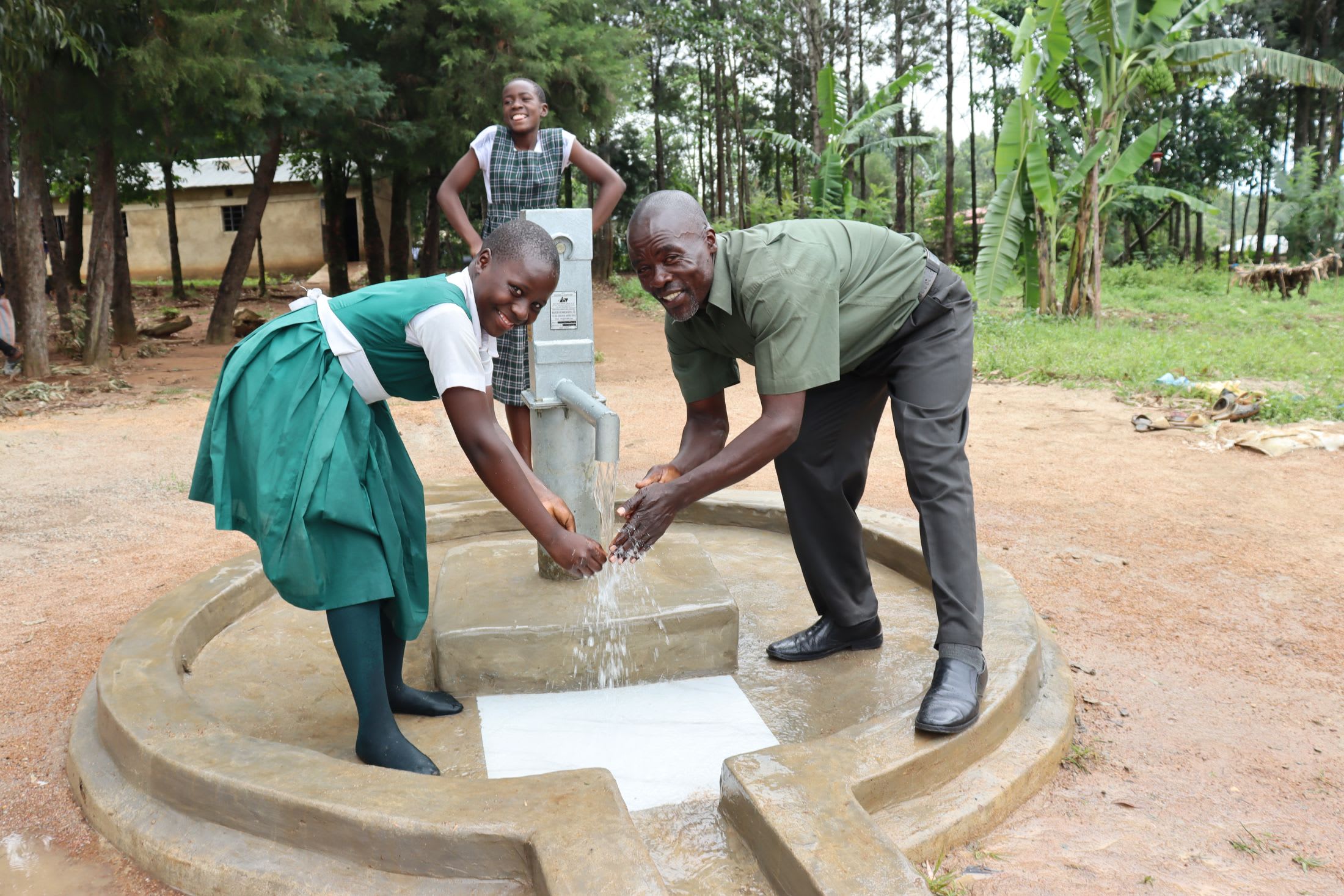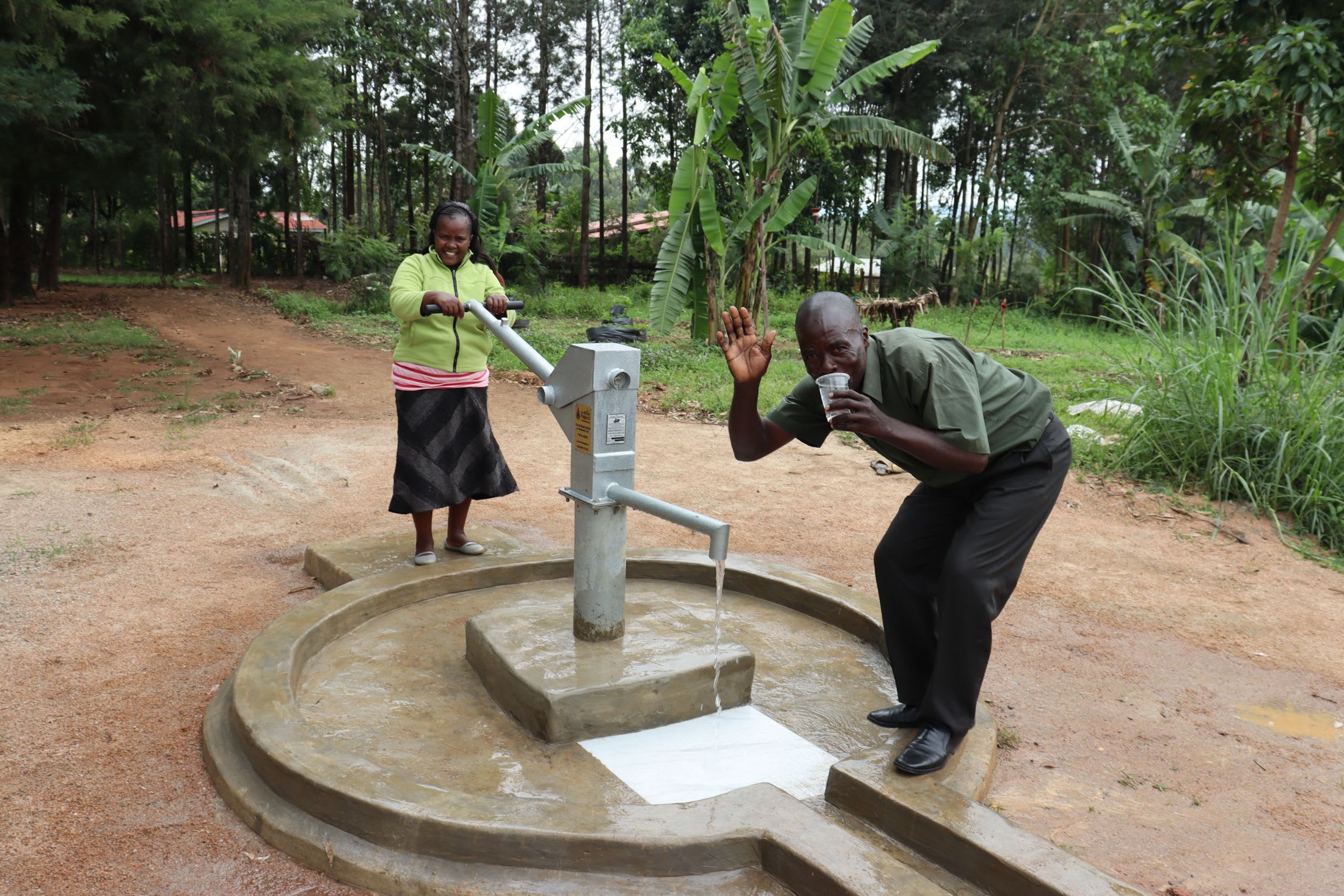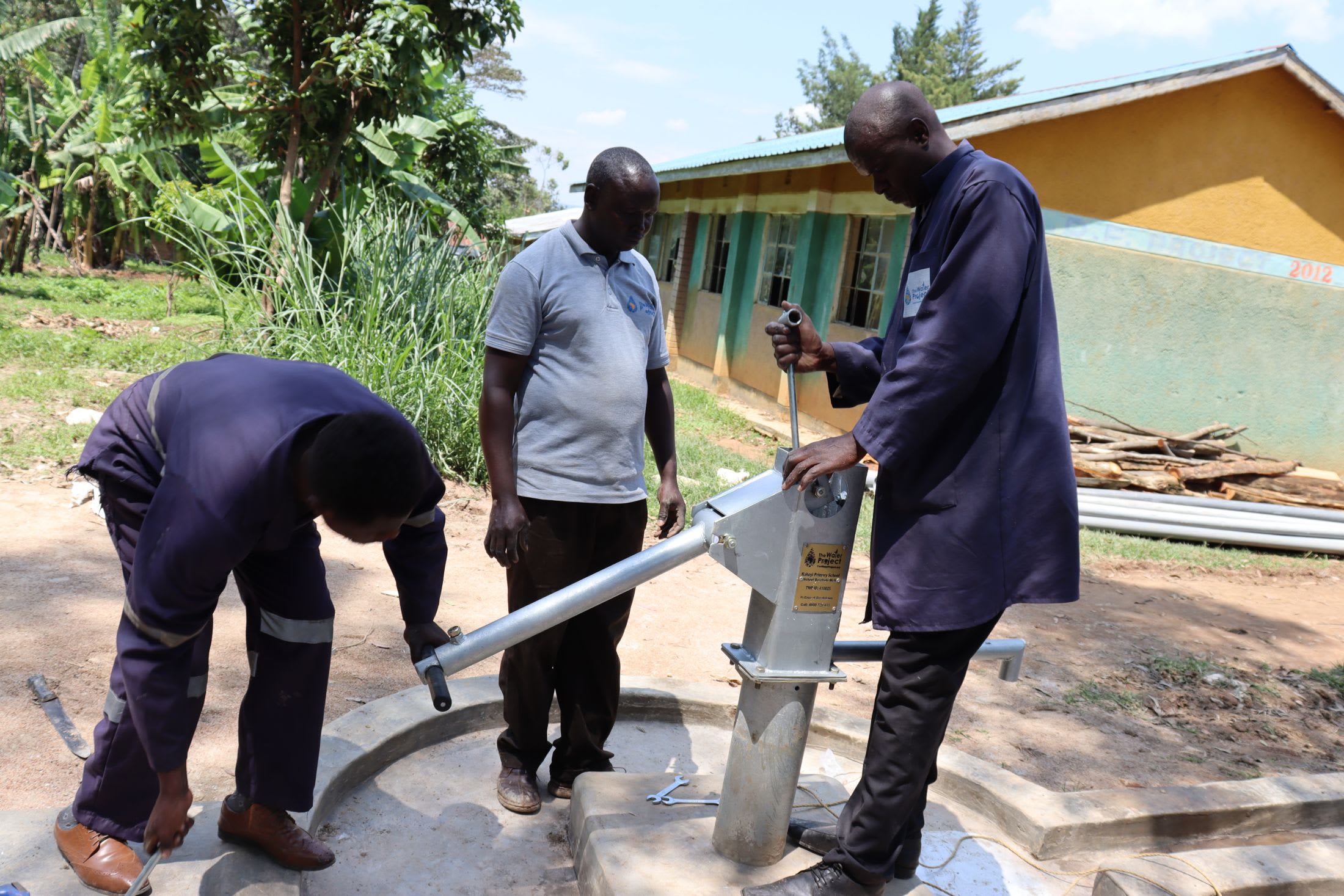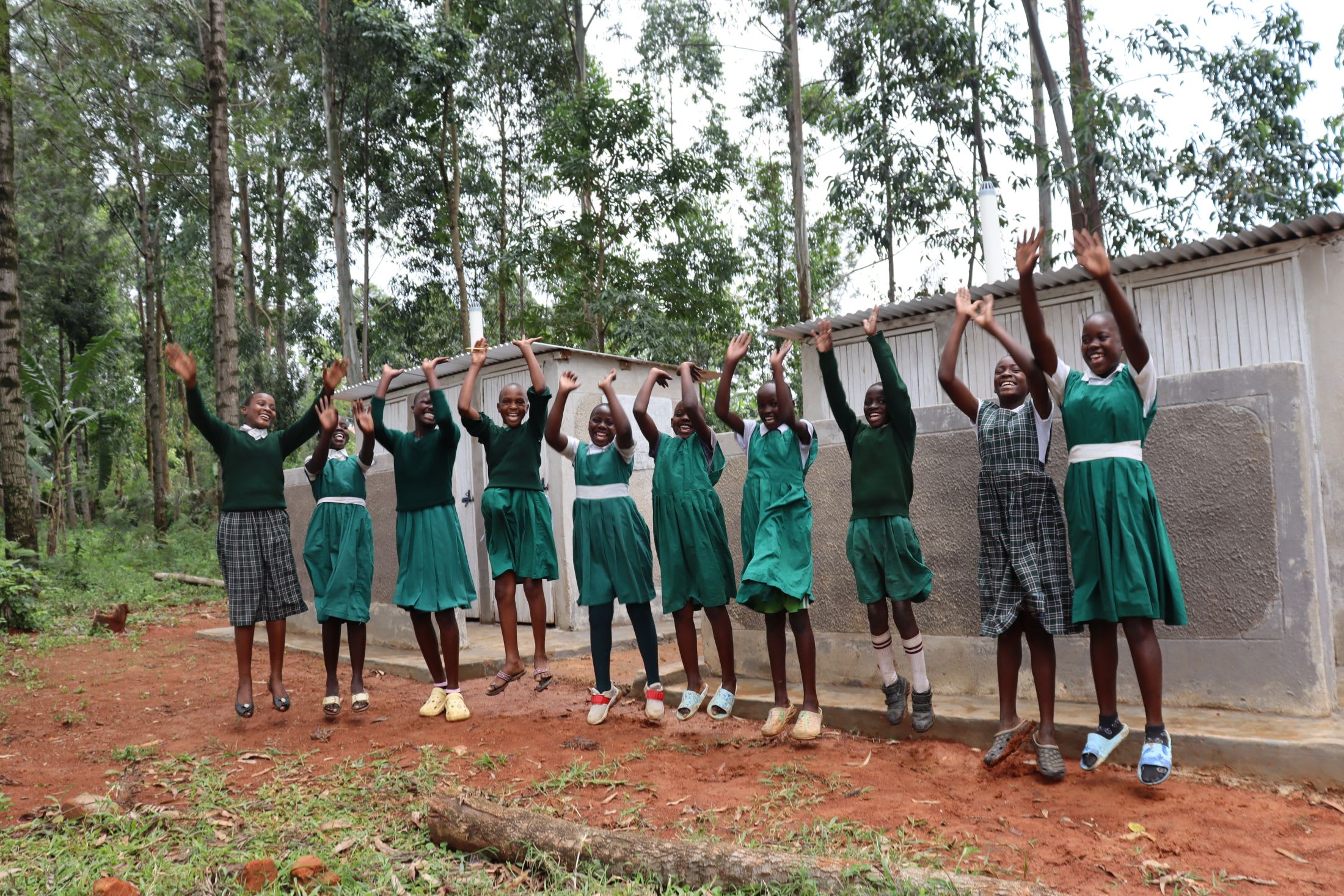The 1,079 staff and students of Kakoyi Primary School struggle to access sufficient water. During dry seasons and electricity blackouts in particular, children and adults alike struggle to have enough water to meet their basic needs.
There is a dug well at the primary school, but it suffers from seasonality, causing it to be dry much of the year. Collecting water from the well is also dangerous and labor-intensive for children. Children must lower their jerricans into the well on a rope and lug them back up to fetch water. This contaminates the water and causes the children to be exhausted, and everyone who consumes it regularly suffers from water-related illnesses.

As a result, the primary water source everyone relies on daily is a borehole well at the nearby secondary school that uses large amounts of electricity to pump water. The significant financial drain on the primary school to use the well is not the only issue. The electricity is unreliable which means no one can count on water being available since, without electricity the pump does not work. The overuse of the well by the hundreds of students causes it to run out of water too.
"The main water source, which is from the secondary section, is not reliable because the school experiences [the] challenges of constant electricity blackouts and huge electricity bills rendering the school without sufficient water. Their [primary] water source, according to the school senior teacher, says it has been dry since the beginning of this month," said field officer Nelly Chelebet.
Head Teacher Gilbert Sifuna (shown below), 47, shared about the water crisis at Kakoyi Primary School. "The water point has affected us both financially and health-wise as we have to pay electricity bills and also we have to spend resources on medication."

"Besides that, it has been very hard to implement organized program[s] for the school because of [the] wastage of time during water collection. More so, the water point is not reliable as sometimes [it] is dry, as it has been the last three weeks," he continued.
Students miss vital classroom time because so much time is spent fetching water at the well or being forced to seek out alternative sources off the school grounds. They are exhausted from fetching water and the time spent on learning is less effective because they don't have the energy to concentrate.

13-year-old Darren J., shown below with the red undershirt waiting to collect water, said, "We don't have [a] reliable water source in the school; hence the sanitation and hygiene practices are not adhered to. During dry seasons, we have to carry water from home which is very tiresome and not enough to be used, which also forces us to move out of the school compound looking for water."

Installing a new well on the school campus will give students like Darren a better opportunity to prioritize their educations and, ultimately, their futures. Teachers and staff like Gilbert will be able to implement new programs that give their students a more well-rounded educational experience, not shaded by the constant burden of seeking water.
Water at schools is unique, which is why we need unique solutions.
The Proposed Solution, Determined Together...
At The Water Project, everyone has a part in conversations and solutions. We operate in transparency, believing it benefits everyone. We expect reliability from one another as well as our water solutions. Everyone involved makes this possible through hard work and dedication.
In a joint discovery process, community members determine their most advantageous water solution alongside our technical experts. Read more specifics about this solution on the What We're Building tab of this project page. Then, community members lend their support by collecting needed construction materials (sometimes for months ahead of time!), providing labor alongside our artisans, sheltering and feeding the builders, and supplying additional resources.
Water Access for Everyone
This water project is one piece in a large puzzle. In Kenya, Sierra Leone, and Uganda, we're working toward complete coverage of reliable, maintained water sources that guarantee public access now and in the future within a 30-minute round trip for each community, household, school, and health center. One day, we hope to report that this has been achieved!
Training on Health, Hygiene & More
With the community's input, we've identified topics where training will increase positive health outcomes at personal, household, and community levels. We'll coordinate with them to find the best training date. Some examples of what we train communities on are:
- Improved hygiene, health, and sanitation habits
- Safe water handling, storage & treatment
- Disease prevention and proper handwashing
- Income-generation
- Community leadership, governance, & election of a water committee
- Operation and maintenance of the water point
Handwashing Stations
Alongside each water source, we also provide two new gravity-fed handwashing stations that will allow everyone at the school to wash their hands without running water. Handwashing is so important to help prevent future water-related illnesses in the school community.
The student health club will maintain the stations, fill them with water, and supply them with soap (which we will teach the school community how to make during the training!).
VIP Latrines
In addition, we will construct two triple-door Ventilated Improved Pit (VIP) latrine blocks designed to prevent fecal disease transmission. Each latrine will have a cement floor, which is easy to use and clean regularly. Three doors will serve the girls, and three doors will serve the boys.
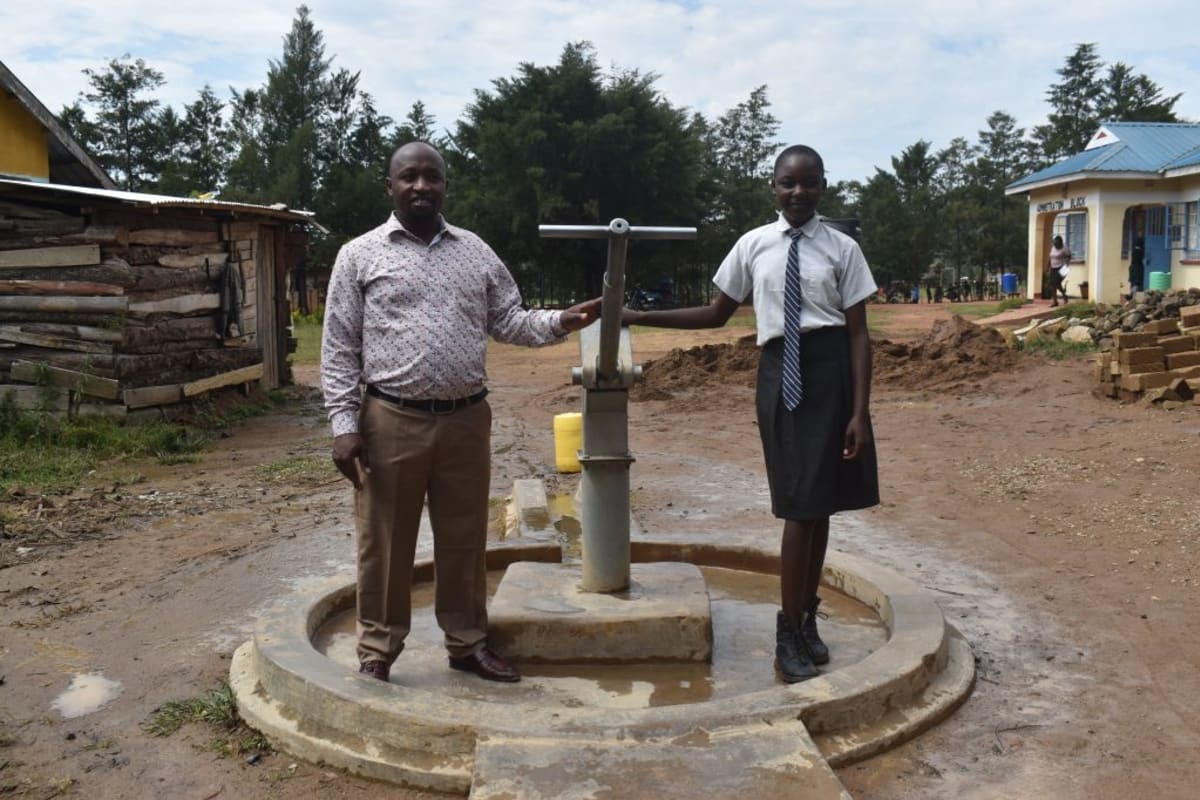
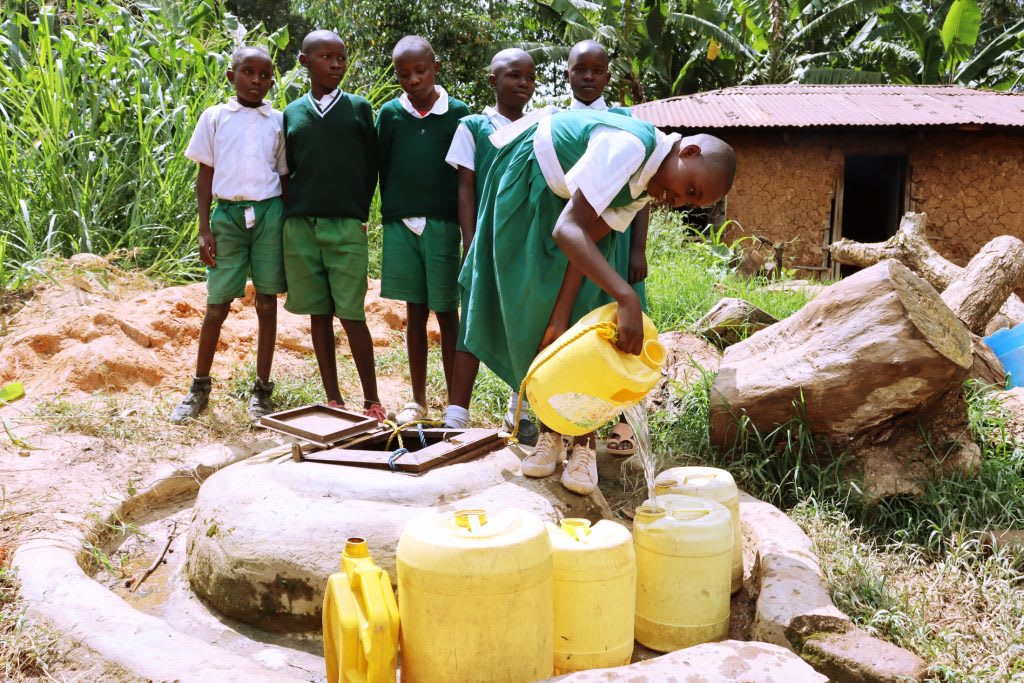
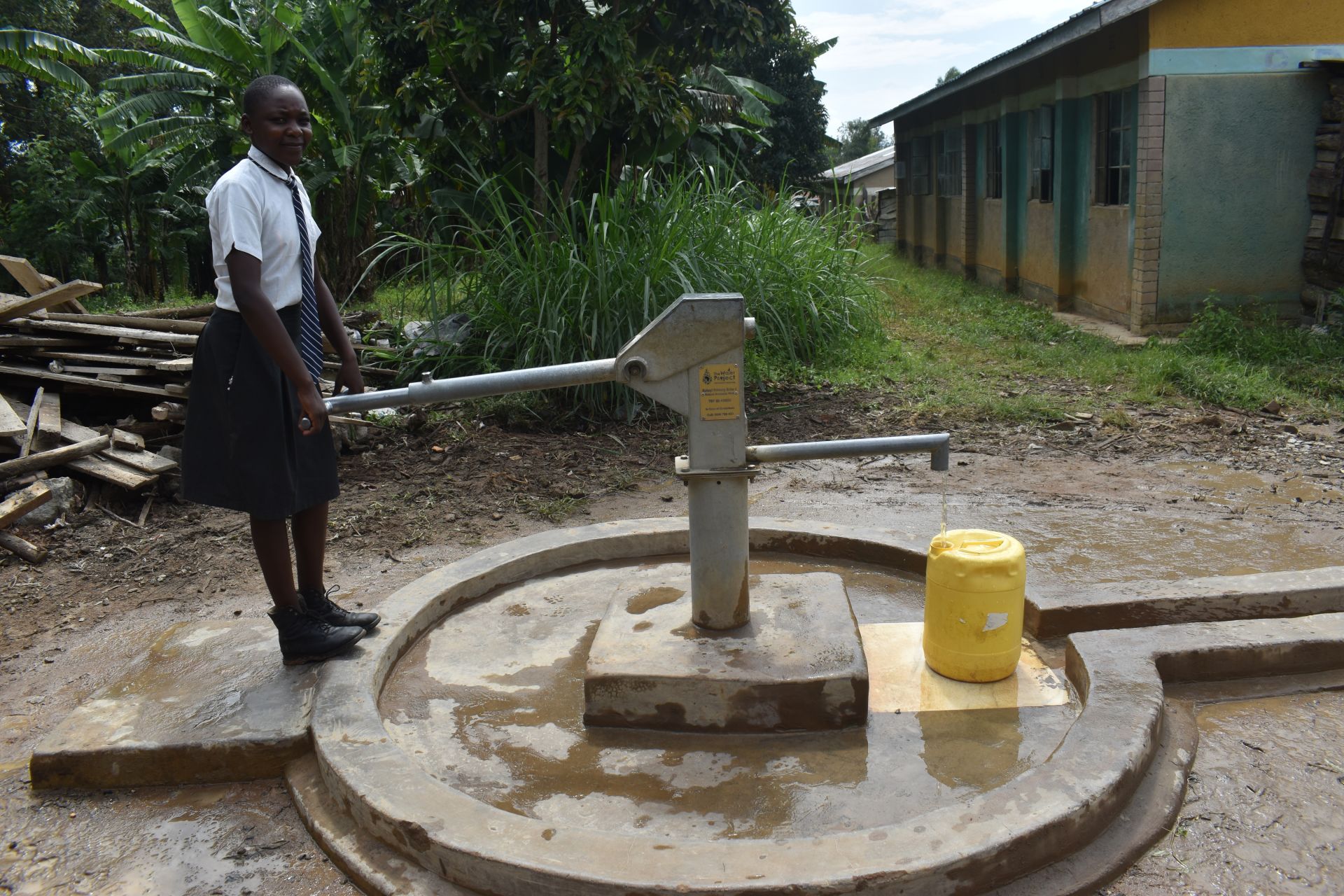
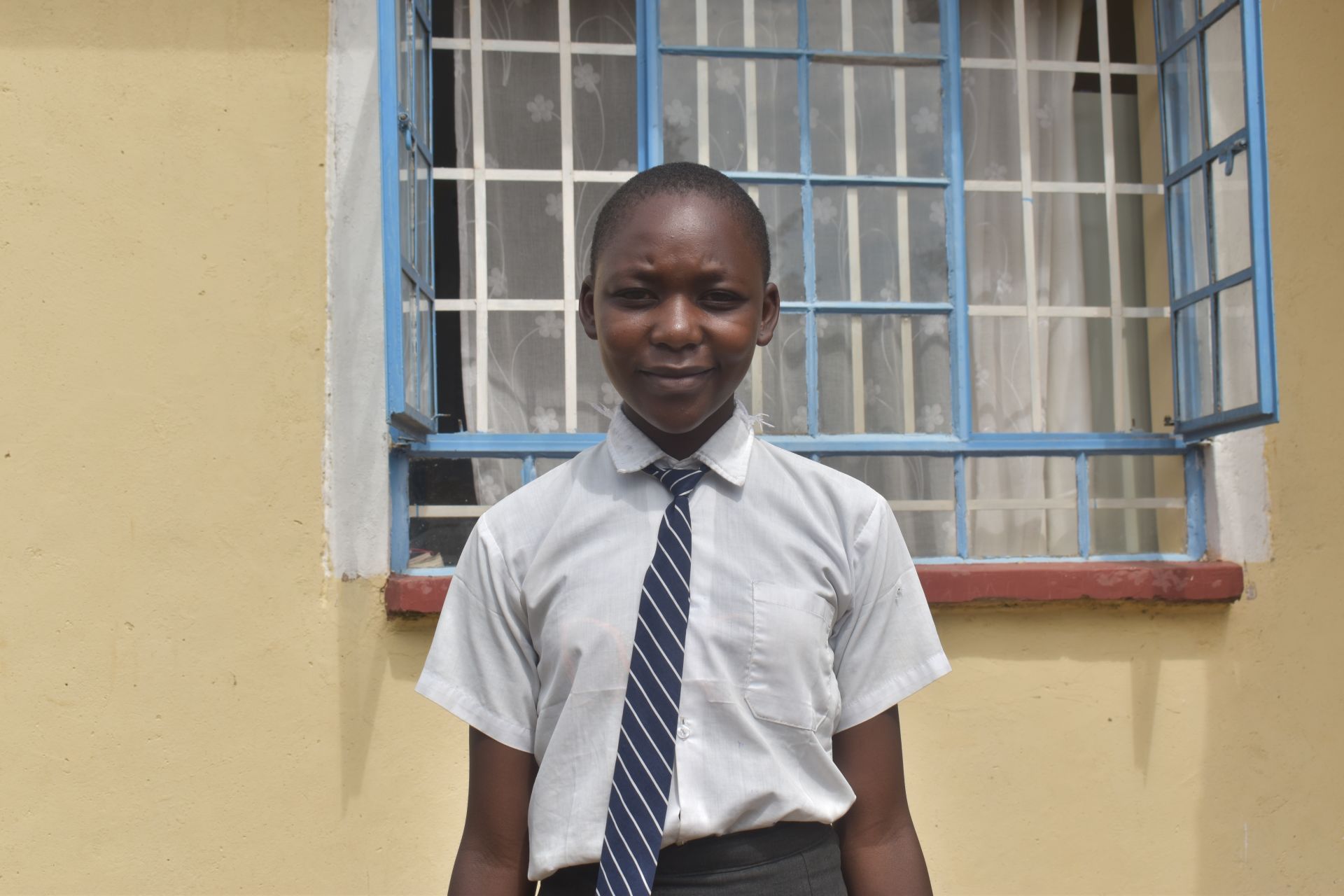

 Borehole Well and Hand Pump
Borehole Well and Hand Pump
 Rehabilitation Project
Rehabilitation Project












